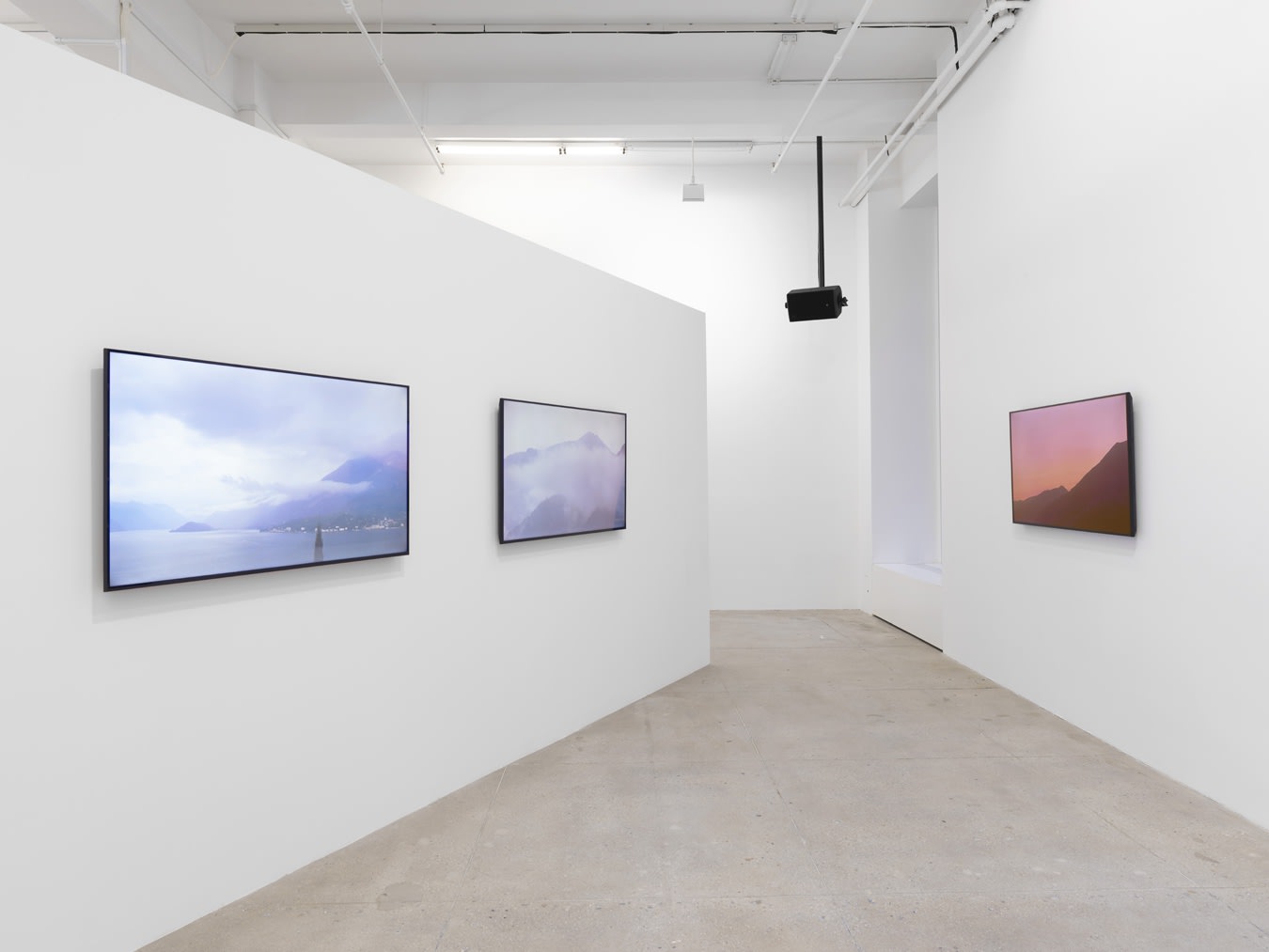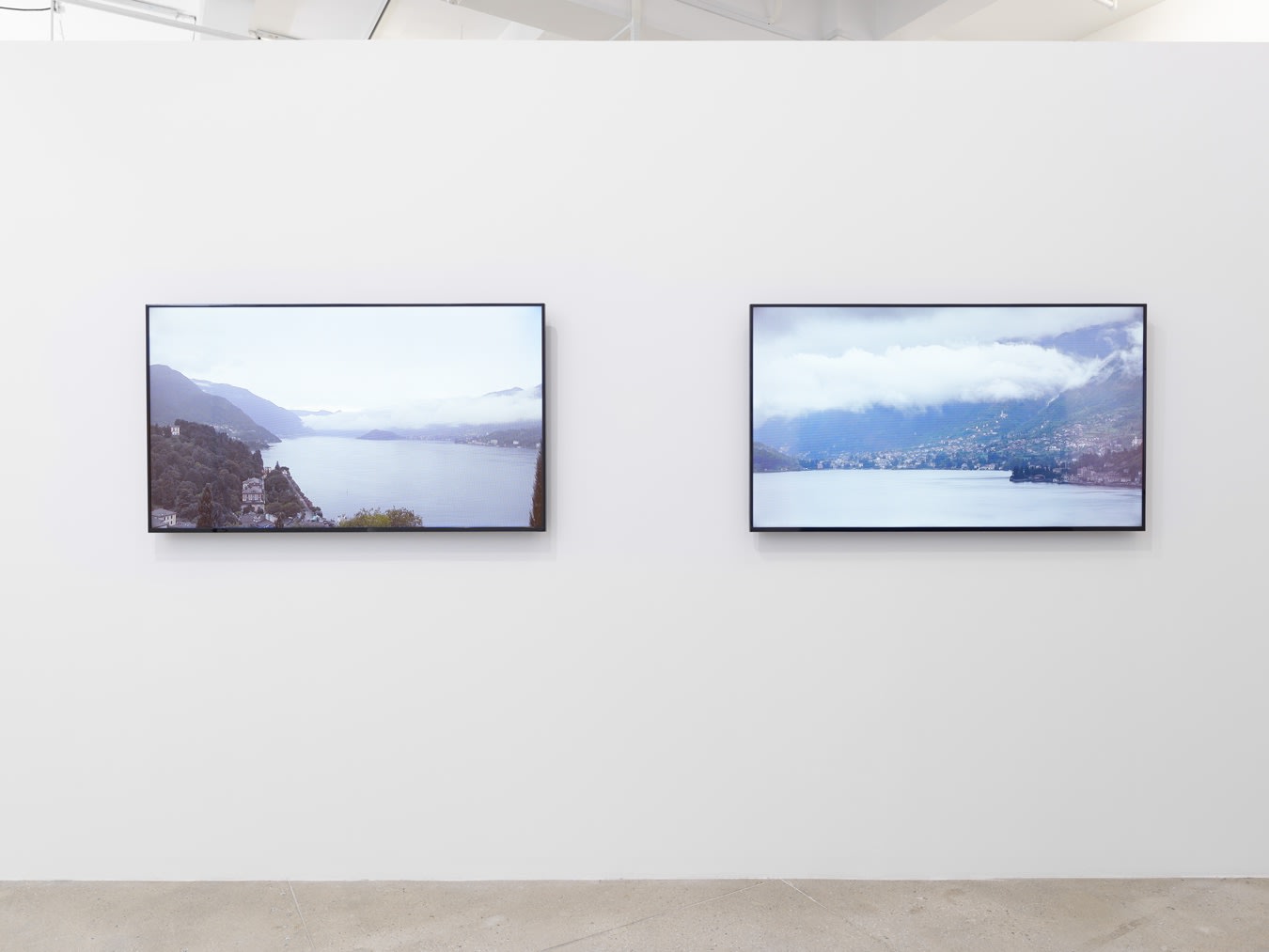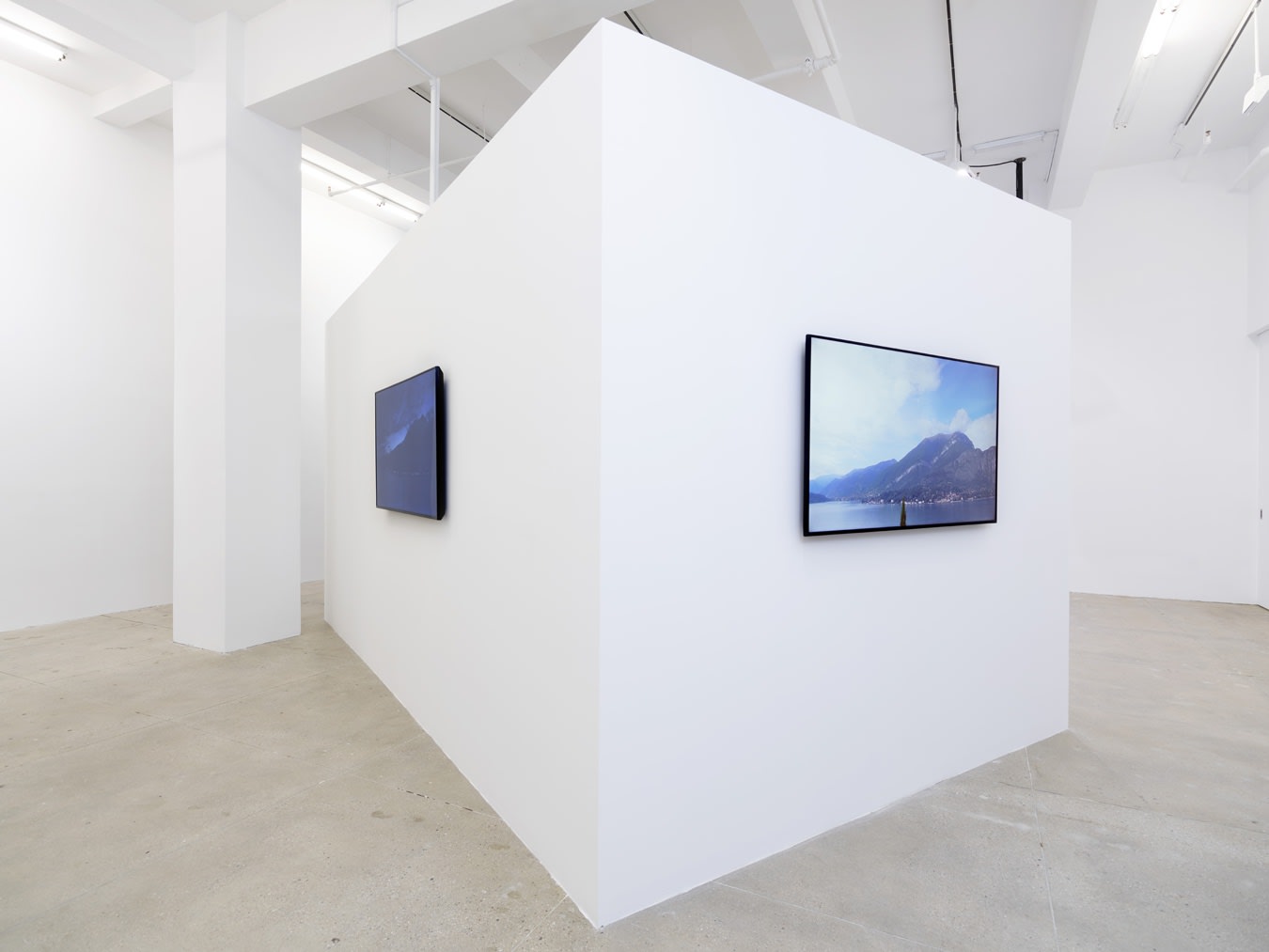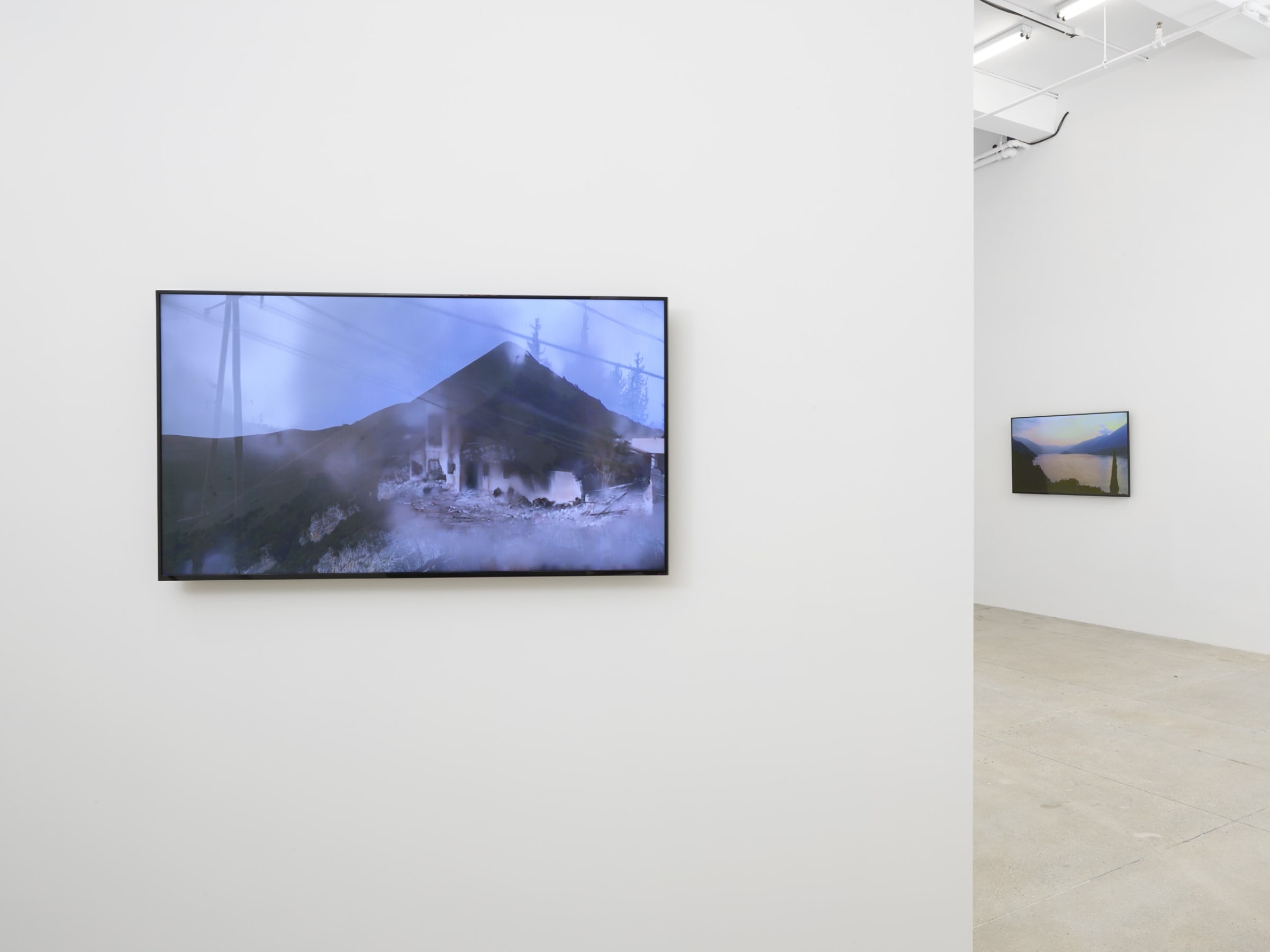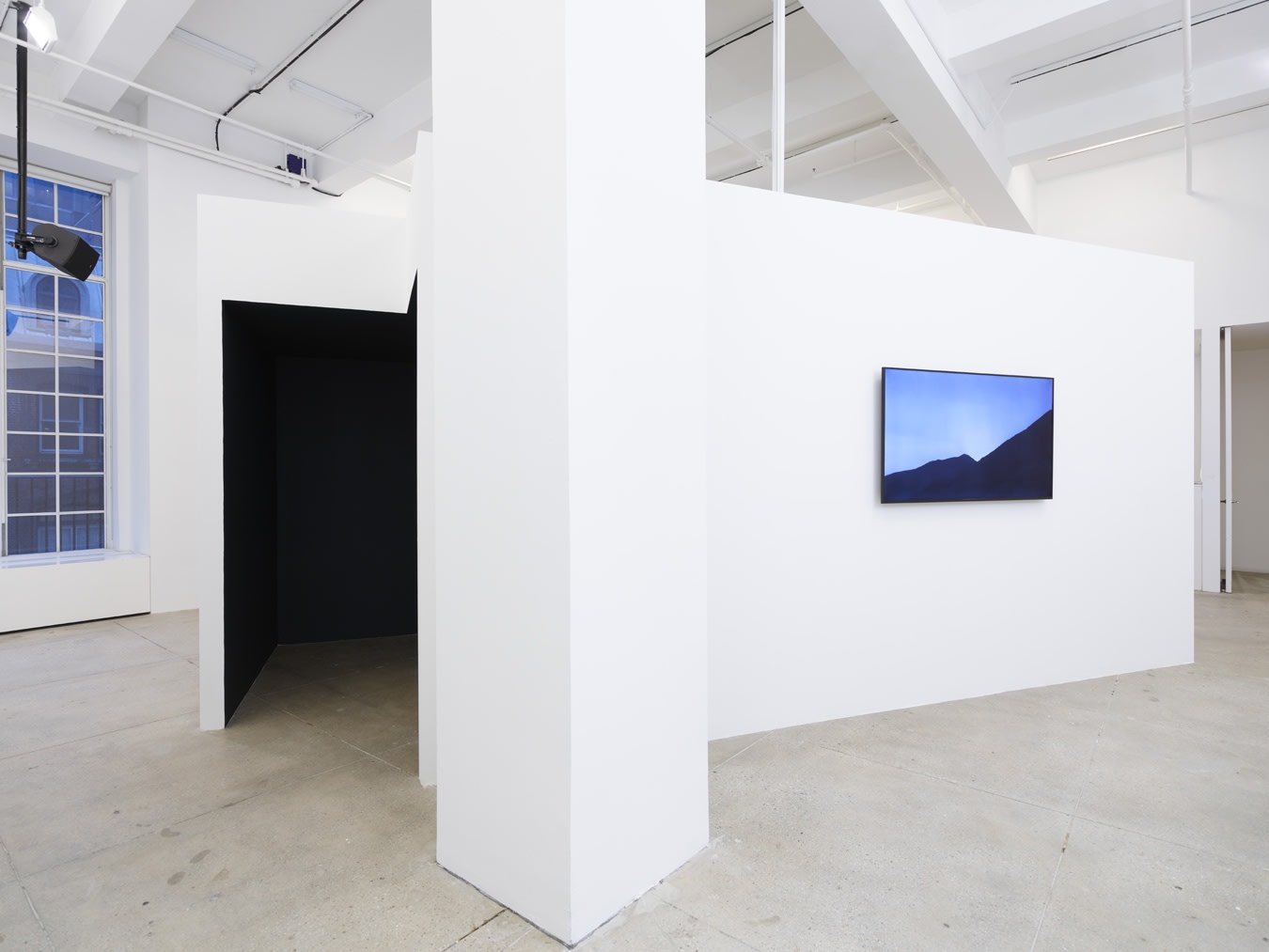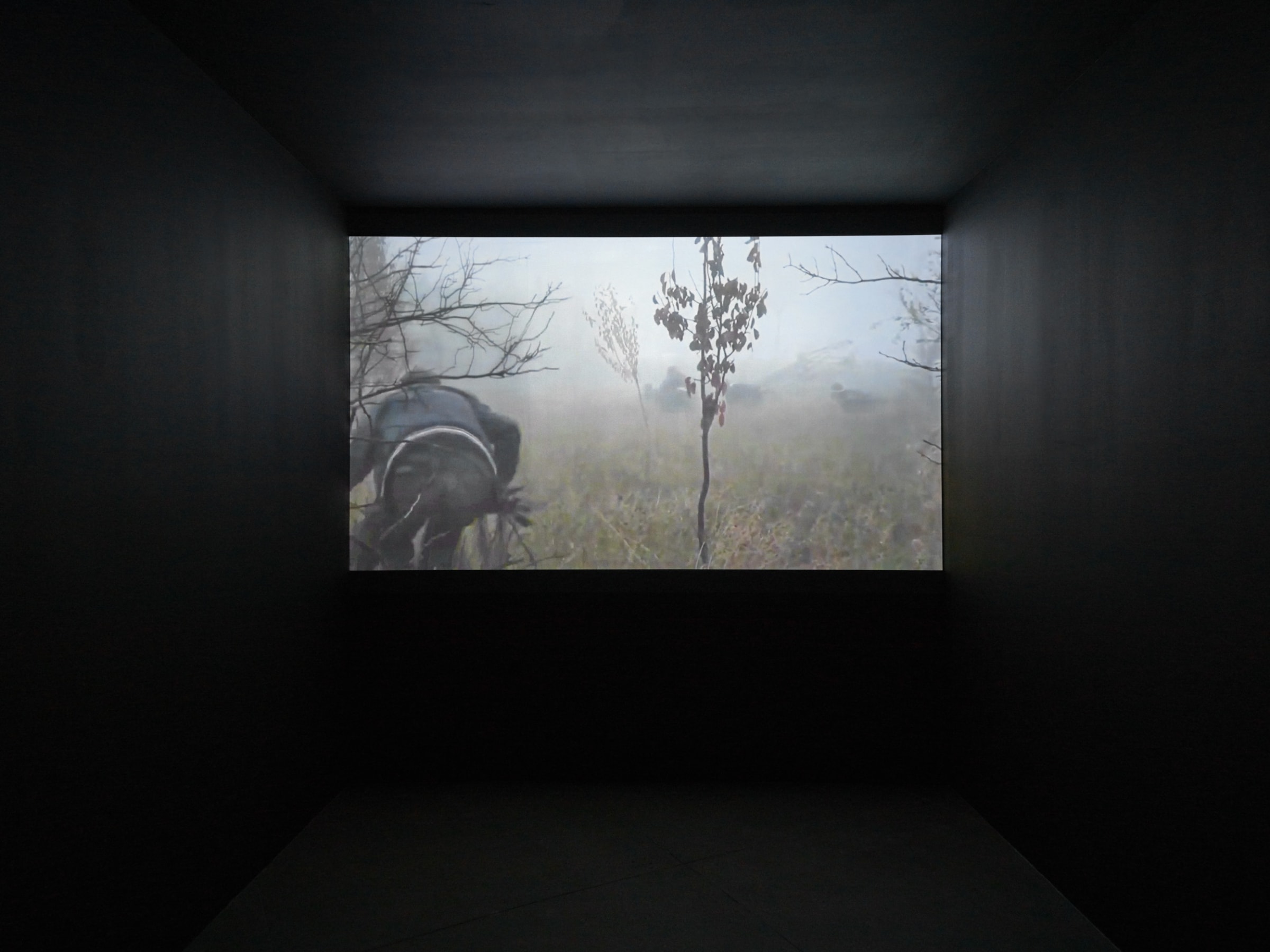Overview
Marian Goodman Gallery New York is pleased to present Psalm 29(30), a new six-channel video and sound installation by Dara Birnbaum created in 2016. Upon entering the Third Floor, visitors encounter serene and solemn images of the foothills of the Italian Alps, footage shot by the artist in 2011. Viewers then encounter an interior chamber housing a video projection, which portrays aspects of the Syrian Civil War in 2014. Birnbaum places the landscape imagery that she made during a residency at the Rockefeller Foundation Bellagio Center in opposition to the ensuing interiorized images based on Syrian war footage sourced from the Internet. This juxtaposition of alternate realities offers a line of historical traces and a meditative space in which to reflect upon them with a sensitivity not often provided by mass media.
Dara Birnbaum: Psalm 29(30)
May 4 – June 10, 2017
Opening Reception: Thursday, May 4, 6-8 pm
May 4 – June 10, 2017
Opening Reception: Thursday, May 4, 6-8 pm
From one space to another, from one intensity to another, passing images of the tranquility of the Transalpine mountains to the intense disarray of the Syrian conflict, the multi-screen video installation by Dara Birnbaum restores its full meaning to the concept emergency.
– parisart, April, 2016
Marian Goodman Gallery New York is pleased to present Psalm 29(30), a new six-channel video and sound installation by Dara Birnbaum created in 2016.
Upon entering the Third Floor, visitors encounter serene and solemn images of the foothills of the Italian Alps, footage shot by the artist in 2011. Viewers then encounter an interior chamber housing a video projection, which portrays aspects of the Syrian Civil War in 2014. Birnbaum places the landscape imagery that she made during a residency at the Rockefeller Foundation Bellagio Center in opposition to the ensuing interiorized images based on Syrian war footage sourced from the Internet. This juxtaposition of alternate realities offers a line of historical traces and a meditative space in which to reflect upon them with a sensitivity not often provided by mass media.
This six-channel installation and sound work is edited by Birnbaum in collaboration with filmmaker/musician Michael Saia and incorporates two sound compositions by Neil Benezra unique to this work. One, Psalm 29(30) as chanted by monks of the Carthusian Order, serves as the primary source material for the harmonious composition we hear playing outside the chamber. The second, experienced within the ‘heart chamber’, is Benezra’s original composition inspired in part by Syrian music. This second sound composition also resonates with a melodious mix of church bells and environmental sounds.
The whole installation is a meditation on the possibility of healing, an environment formulated so that within its central position one can confront images of war without the spectacle deployed by most mass media and the news industry.
– Dara Birnbaum
Birnbaum’s concern regarding the spectacle of war recalls Susan Sontag’s questioning of war photography. “Is there an antidote to the perennial seductiveness of war?”, contemplates Sontag. “The works for me don’t bring an answer; I’ve never known how to do that. They always bring a question,” says Birnbaum, asking: “Can suffering be portrayed in such a way that reflection can take place, in place of manipulated fear, anguish, or anger? … What is solemnity? What is pain? Or, how can one be in touch with the pain of others?”
– Dara Birnbaum
Birnbaum’s concern regarding the spectacle of war recalls Susan Sontag’s questioning of war photography. “Is there an antidote to the perennial seductiveness of war?”, contemplates Sontag. “The works for me don’t bring an answer; I’ve never known how to do that. They always bring a question,” says Birnbaum, asking: “Can suffering be portrayed in such a way that reflection can take place, in place of manipulated fear, anguish, or anger? … What is solemnity? What is pain? Or, how can one be in touch with the pain of others?”
This is a psalm of thanksgiving, to be sung in pious solemnity. It is believed it was written upon King David’s recovery from a dangerous fit of sickness, and therefore for Birnbaum the psalm also addresses the contradiction between light and dark, life and death.
The genesis of the work dates back to 2014 when, following an extended period of hospitalization, Psalm 29(30) provided Birnbaum with a source of inspiration about the possibilities of healing. Birnbaum says: “The Gregorian version of the Psalm meant a lot to me in that it was chanted by the monks of La Grande Chartreuse from Southern France—whom are sworn to silence. They only use their voices for chanting or for prayer.”
Dara Birnbaum’s pioneering video, media, and installation work has, over the past four decades, addressed the ideological and the aesthetic character of mass media imagery and has been considered fundamental to our understanding the history of media art. Birnbaum made her first video installation, “Attack Piece” in 1975. Then resisting the tendency for video to be limited to being solely a projection in a darkened space, she released it from these conditions, becoming one of the first artists to design complex and innovative installations that juxtapose imagery from multiple sources while also integrating three dimensional elements -- large-scale photographs, sculptural or architectural elements -- into the work. She is known for her groundbreaking strategies and for using manipulated television footage.
Born in New York in 1946, Dara Birnbaum received a Bachelor of Architecture degree from Carnegie Mellon University, Pittsburg, a B.F.A. in Painting from the San Francisco Art Institute and a Certificate in Video and Electronic Editing at the Video Study Center at the New School for Social Research, New York. Since her first solo exhibition in New York, at Artists Space in 1977, Birnbaum has had solo shows in numerous renowned international museums, such as: The Museum of Modern Art (MoMA), New York (2007); the Jewish Museum, New York (2004); Kunsthalle Wien, Vienna (2006 and 1995); IVAM, Institut Valencià d’Art Modern (Centre del Carme), Valencia (1990); and the Whitney Museum of American Art, New York (1984). In 2009, a major retrospective of Birnbaum’s work Dara Birnbaum: The Dark Matter of Media Light was organized by the Stedelijk Museum voor Actuele Kunst (S.M.A.K.), Ghent, Belgium and also traveled to the Museu de Arte Contemporânea de Serralves, Porto, Portugal (2010). In conjunction with the retrospective, a major monograph on Ms. Birnbaum’s work, The Dark Matter of Media Light, was published by Prestel Publishing.
The artist has been featured in a vast number of important group exhibitions, festivals and biennales such as the Venice Biennale and Documenta, Kassel. Furthermore, her work has been shown at: the South London Gallery (2011); the Whitney Museum of American Art, New York (2010); the Reina Sofia, Madrid (2010); MACBA, Barcelona, Spain (2010); Kunsthalle and MuMOK, Vienna (2010); The Metropolitan Museum of Art, New York (2009); Modern Museet, Stockholm, Sweden, (2009); The National Museum of Modern Art, Tokyo, Japan (2009); The Museum of Contemporary Art, Los Angeles (2007); the San Francisco Museum of Modern Art (1999); Centre Georges Pompidou, Paris (1995); Castello di Rivoli, Turin, Italy (1991); and the Tate Gallery, London (1985).
Birnbaum has been the recipient of various distinguished awards such as: The Rockefeller Foundation Bellagio Center Arts Residency (2011); the Pollock-Krasner Foundation Grant (2011); and the prestigious United States Artists Fellowship (2010). Last spring, she was recognized and honored for her work by The Kitchen, New York, at their annual gala. She is the first woman in video to receive the prestigious Maya Deren Award by the American Film Institute, in 1987. In February 2017, Carnegie Mellon University's School of Art created The Birnbaum Award in the artist’s honor. The Birnbaum Award will be presented annually to a graduating senior whose work exemplifies exceptional art at the intersection of media and technology.
She currently teaches in two distinct graduate programs at the School of Visual Arts (SVA), New York. Simultaneous to this exhibition her work is on view in Breaking News: Turning The Lens on Mass Media, J. Paul Getty Museum, Getty Center Los Angeles, CA through April 30, 2017, and she will be featured in the upcoming exhibition Delirious: Art at the Limits of Reason, 1950-1980, at The Met Breuer, New York, NY opening in September 2017.
Michael Saia is a musician, filmmaker and founder of the film editorial company Jump, NY. His feature films include James Gartner’s sports drama Glory Road (contributing editor) and Jeff Preiss’s Low Down (editor), a jazz biopic. He also worked on the documentaries Living The Legacy, directed by Cynthia Wade and Mission Congo.
Neil Benezra is a composer and sound designer for film, theater, and the arts, as well as founder of Brooklyn Sound and Image, NY. He has collaborated with such acclaimed directors and artists as Abel Ferrara, James Franco, Richard Foreman, Joan Jonas, and On Kawara. He has worked with Dia Art Foundation, New York; Museum of Contemporary Art, Los Angeles; Institute of Contemporary Art, Philadelphia; and Museum Moderner Kunst Stiftung Ludwig (Mumok) Vienna; amongst others.
Please join us at the opening reception on Thursday, May 4th from 6-8 pm.
For further information, please contact Linda Pellegrini, Director of Communications, at: linda@mariangoodman.com, tel. 212 977 7160, or visit www.mariangoodman.com
